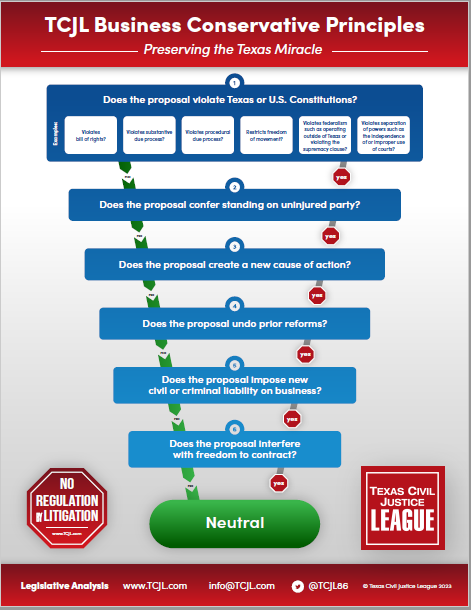The Business Court [Third Division] has denied an apartment developer’s plea to the jurisdiction, which challenged the court’s subject matter jurisdiction over Plaintiff general contractor’s third-party claims against 18 subcontractors.
Cadence McShane Construction Co., LLC v. Ryan BB-Blockhouse Creek (No. 25-BC03B-0022; 2025 Tex. Bus. 43; November 3, 2025) arose from a contract dispute involving a 347-unit apartment complex in Leander. In 2021 Ryan retained CMC to serve as general contractor on the project for a maximum contract price of more than $60.5 million. After a couple of years of construction, the relationship went south. Ryan allegedly terminated the contract in November, 2024, claiming CMC failed to fulfill its duties as general contractor. CMC filed suit in the Business Court on February 6, 2025, asserting breach of contract and other theories. Cadence alleged that Ryan didn’t pay amounts due under the contract and violated the contract by locking CMC out of the project. CMC’s petition further asserted that the Business Court had subject matter jurisdiction because the contract constituted a qualified transaction under § 25.004(b) with an amount in controversy exceeding $10 million.
The following month Ryan filed counterclaims against CMC for breach of contract, alleging that CMC and its subcontractors failed to properly install and construct various parts of the project. Ryan further claimed fraud by nondisclosure, fraudulent inducement, and filing of a wrongful lien. It, too, asserted jurisdiction based on a qualified transaction with an amount in controversy exceeding $10 million. Soon thereafter CMC filed third-party petitions naming 18 different subcontractors with various contract amounts ranging from $40,000 to $13 million. Ryan filed a plea to the jurisdiction challenging the Business Court’s jurisdiction over CMC’s third-party claims on the basis that CMC could not aggregate claims against multiple subcontractors for purposes of the court’s jurisdictional threshold. It also argued that CMC’s third-party claims didn’t fall within the court’s supplemental jurisdiction because the court had no jurisdiction over claims requiring joinder of third parties. CMC responded that all of its third-party claims “arise out of a qualified transaction” and that the aggregate amount in controversy satisfies the jurisdictional requirement.
In an opinion by Judge Sweeten, the court denied the plea. As this case arose under the 2023 version of the statute, the court commenced its analysis with the definition of “qualified transaction” in § 25A.001(d)(1), Government Code, and whether CMC’s third-party claims “arise out of” a qualified transaction. First, the court determined that for purposes of the statute, “action” means a lawsuit. Next, “arising out of,” according to SCOTX authority, “has ‘broad significance’ and that the plain and common meaning of the phrase means ‘originating from,’ ‘stemming from,’ ‘flowing from,’ or ‘resulting from,’” analogous to but-for causation. The question thus became whether CMC’s lawsuit, including the properly joined counterclaims and third-party claims, “‘originate from’ or ‘flow from’ or ‘result from’ a qualified transaction.
The court concluded that they do. CMC’s claims against the subcontractors are all based on a Standard Subcontractor Agreement defining the project as the same one that is the subject of CMC’s and Ryan’s original lawsuit and counterclaim. Each standard subcontract refers to the “prime contract” between CMC and Ryan and requires each subcontractor’s work to conform to the prime contract. The case “concerns on construction project carried out through a network of related contracts…. Ryan’s efforts to carve the dispute into smaller, disconnected pieces, finds no support in the statute, or the evident purpose of Section 25.004.” The court had no trouble finding that the amount in controversy threshold was met, “since CMC’s third-party claims are filed in the same action, and arise out of a qualified action.” There was thus no need to “independently assess the amount-in-controversy of the third-party claims individually.” (In 2025 the Legislature amended the statute to provide that the amount in controversy for jurisdictional purposes is the total amount of all joined parties’ claims.)

Judge Patrick Sweeten
Ryan further argued that CMC’s third-party claims were unripe because they rely on “contingent future injuries that may never occur” and fail to establish a justiciable controversy. The court rejected this argument. Ryan itself alleged injuries arising out of the subcontractors’ work in myriad ways. Based on these allegations, CMC filed its third-party claims for breach of contract, warranty, indemnity, negligence, contribution and comparative responsibility. “CMC’s alleged injuries,” the court concluded, “for which they seek redress through the filing of their third-party claims against the subcontractors, is neither ‘conjectural, hypothetical or remote.” The court denied Ryan’s plea to the jurisdiction.












